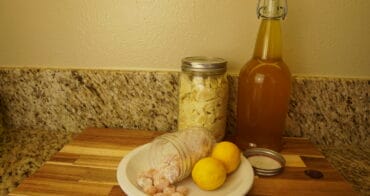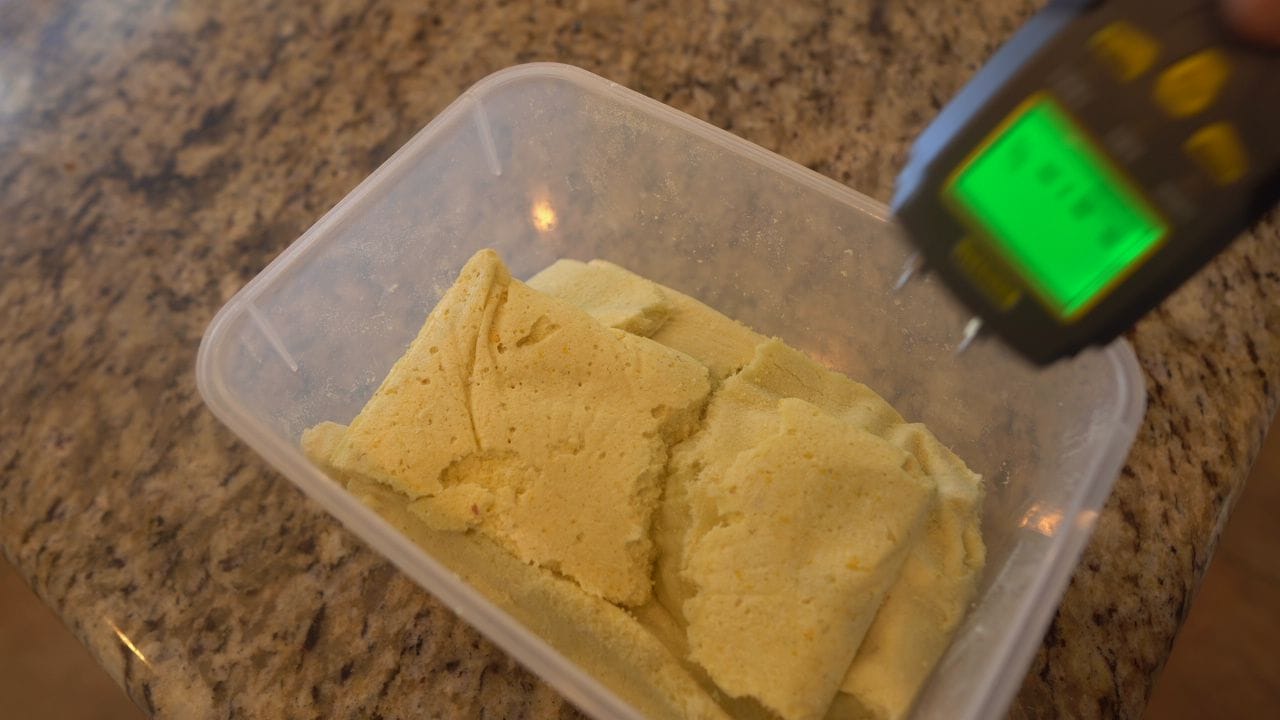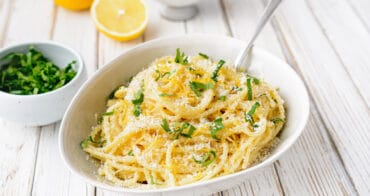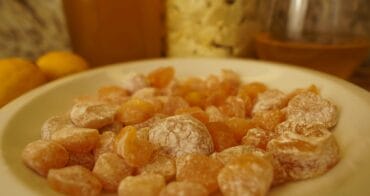25-Year Shelf-Stable Super-Food Hits & Misses
 This process is very simple. I had harvested lemons and removed most of the outer skin zest for the making of limoncello. My lemons come from a tree that I know how it is tended. If you obtain your lemons from the store, wash the skins well with a baking soda and water solution. This will help to remove any pesticides from the skin. The skin contains healthy plant compounds and flavonoids. I pureed the lemons into a fine mash and then froze the blend in ziplock bags.
This process is very simple. I had harvested lemons and removed most of the outer skin zest for the making of limoncello. My lemons come from a tree that I know how it is tended. If you obtain your lemons from the store, wash the skins well with a baking soda and water solution. This will help to remove any pesticides from the skin. The skin contains healthy plant compounds and flavonoids. I pureed the lemons into a fine mash and then froze the blend in ziplock bags.
Unlike other methods of food preservation, freeze-drying does not shrink or toughen the food and retains flavor, color, and nutrition. Dehydrating food can actually remove up to 40% of the nutritional value of some foods. With freeze-drying, you lose almost none of the nutritional value. The food’s cell structure is retained because the moisture sublimates or gasses off, so most foods are indistinguishable from their fresh counterparts when rehydrated. This is especially true for fruits and vegetables.
If you’re interested in a freeze-dryer or equipment for your freeze-dryer, use this link https://bit.ly/2YYjjCw to get the best pricing.
You can also slice these lemons into ⅛ inch slices and freeze-dry them that way if you are concerned about their appearance. You will be able to rehydrate nearly perfect-looking pieces indistinguishable from their fresh counterparts. You could also freeze-dry the juice into a powder for reconstituting as desired. The freeze-drying technology is impressive and finally available to residential consumers. If you would like to look at the freeze-dryer I am using, you can do so at the link below.
I was more concerned with mass processing to retain a large quantity, so I blended pith, the remaining peel, seeds, and all. Trust me, there isn’t the bitterness to it that you might think, and the peel and pith have antibacterial properties and antioxidants. I initially thought, as was the case for other things I have freeze-dried in the past, that this would give me decent portions to freeze-dry and package. This method is excellent for soups, stews, and pasta, but it didn’t work well for me here. I ran it through an entire cycle in the Harvest Right freeze-dryer. When I pulled it out and used the digital moisture meter, some parts were done, but others contained enough moisture that it wouldn’t preserve.
and all. Trust me, there isn’t the bitterness to it that you might think, and the peel and pith have antibacterial properties and antioxidants. I initially thought, as was the case for other things I have freeze-dried in the past, that this would give me decent portions to freeze-dry and package. This method is excellent for soups, stews, and pasta, but it didn’t work well for me here. I ran it through an entire cycle in the Harvest Right freeze-dryer. When I pulled it out and used the digital moisture meter, some parts were done, but others contained enough moisture that it wouldn’t preserve.
I was surprised when I moved it to a container for just a few hours at how fast the entire mash rehydrated with just the remaining liquid. After just a few hours, it was spreadable with a spatula. For me to preserve it, it has to be as  moisture-free as possible. So, I reblended it to a spreadable consistency and spread it directly in a thin layer on the trays. To ensure that it had the best chance of completely sublimating the moisture off, I used a chopstick to make small wholes; then, I used the edge of the spatula to make lines across it in a criss-cross pattern. After another full run in the Harvest Right, the moisture was too low to be read at all and it had a good crunchy sound to it. Perfect. It quickly came right off the tray with a bit of coaxing, and it easily crumbled to a powder between my fingers. That’s ideal.
moisture-free as possible. So, I reblended it to a spreadable consistency and spread it directly in a thin layer on the trays. To ensure that it had the best chance of completely sublimating the moisture off, I used a chopstick to make small wholes; then, I used the edge of the spatula to make lines across it in a criss-cross pattern. After another full run in the Harvest Right, the moisture was too low to be read at all and it had a good crunchy sound to it. Perfect. It quickly came right off the tray with a bit of coaxing, and it easily crumbled to a powder between my fingers. That’s ideal.
I vacuum sealed some for use this season and packed the rest in a mason jar for a dark corner of my cupboard. If you get in the habit of using a little a couple of times a week, you can quickly go through a harvest of lemons in under a year without wasting any of them, and you will be getting a potent and healthy weekly dose of flavor vitamin C, and antioxidants.
USES
You can simply powder this in your hands, use a mortar and pestle for a super fine powder, or break off a chunk. I can easily freeze-dry ten pounds or more whole lemons into a quart of powder-able pieces. That’s 32 ounces of pure lemon powder. To buy that same amount of freeze-dried lemon would cost me about 250 dollars. If you already use freeze-dried lemon powder and are buying it online, you could save hundreds of dollars on this one food alone by freeze-drying it yourself. Going into this project, I was skeptical. I thought the powder would be bitter because I was using so much of the pith of the lemon, which is known for being bitter, but there wasn’t any bitterness to it. You can eat a small chunk as it is for a burst of lemon flavor and vitamin C. You can mix it with ground pepper for a lemon pepper seasoning for chicken or fish. Most people I talked to simply take a powdered teaspoon of it and pour hot water over it. You can add a little honey to taste if you would like, but this gives you a soothing lemon tea that provides you vitamin C and is touted as a type of cold-buster.
already use freeze-dried lemon powder and are buying it online, you could save hundreds of dollars on this one food alone by freeze-drying it yourself. Going into this project, I was skeptical. I thought the powder would be bitter because I was using so much of the pith of the lemon, which is known for being bitter, but there wasn’t any bitterness to it. You can eat a small chunk as it is for a burst of lemon flavor and vitamin C. You can mix it with ground pepper for a lemon pepper seasoning for chicken or fish. Most people I talked to simply take a powdered teaspoon of it and pour hot water over it. You can add a little honey to taste if you would like, but this gives you a soothing lemon tea that provides you vitamin C and is touted as a type of cold-buster.
The lemon flavor was so intense and well preserved that I wanted to make a candy out of it. Knowing how to make a healthy lozenge from scratch would be a great skill to have. To this end, I started with the most basic recipe I could find. Though I believed that it would result in a lemon drop hard candy of sorts, it wasn’t even close. I will explain why in a moment, but we will call this recipe lemon taffy. Because I wanted these to be cold lozenges, I powdered a Calcium, Magnesium, Zinc, D3 capsule to add to it.
I then powdered a half-ounce of my freeze-dried lemon. The lemon flavor is intense without being sharp and potent, so I set a teaspoon of the powder aside to mix with the powdered sugar that will coat the outside of my candy. I used 1 and 1/4 cup sugar, 1/3 cup water, and a tablespoon of honey for the candy. When it starts to boil, I put in a tablespoon of lemon juice. I then heated it over middle heat until dissolved. At 230 degrees, I added the powder and stirred vigorously until all was dissolved. You have to stir constantly, and you have to be able to take the temperature of your boiling syrup, and here is why my candy was more of an experiment than a success. My recipe claimed to be making drops but only indicated that a temperature of 250 degrees needed to be achieved. As I researched, I realized that 250 degrees would give you a taffy-like candy that will not hold its form well. I wanted hard candy.
When it comes to candy, here are the temperatures for the different types: 235-240 fudge, 245-250 caramel, 250-265 gummies, 270-290 taffy, 300-310 is toffee, brittles, lollipops, and lozenges. So, though I poured this into a fancy silicone candy mold and the rest onto a cookie sheet to cold, I carefully rolled these into balls and dusted  them with powdered sugar and my lemon powder, they didn’t hold form. They were good. They were tasty as a burst of lemon treat, but they just morphed into a big blob when left out or placed in a jar. I would need to wrap each piece individually for this candy, and they had the texture of a chewy taffy. They merge into one big blob when they’re not individually wrapped, regardless of how much powdered sugar you put on them.
them with powdered sugar and my lemon powder, they didn’t hold form. They were good. They were tasty as a burst of lemon treat, but they just morphed into a big blob when left out or placed in a jar. I would need to wrap each piece individually for this candy, and they had the texture of a chewy taffy. They merge into one big blob when they’re not individually wrapped, regardless of how much powdered sugar you put on them.
In my second attempt, after some more research, I pushed the temperature too high because Wikipedia said the temperature should be 320 degrees. I’m not going to say Wikipedia was wrong, but I will say it didn’t provide me with the whole picture here. Unfortunately, that temperature began to carmelize the sugar, so it was still good and had an old-timey flavor. I would do this again and shoot for a temperature of 300 to 310 and no higher to get the perfect hard texture. I am confident both lozenges would work to soothe a cough and reduce the effects of a cold, and I have been so sick in the past that I couldn’t eat another lozenge. I am pretty particular about lozenges now. These will be a tasty, welcome addition to my cold-busting kit. I will be working with it some more to perfect it. I might add some herbal elements to it, but I will definitely process my third batch at 300 degrees.
 Candy aside, you can take a tablespoon of the powder, cracked black pepper, a half stick or stick of butter, and a cup of milk for a delicious pasta sauce that is great with fish or chicken as a protein. Recipes below. I sometimes just nibble on a piece of the freeze-dried lemon just as it is.
Candy aside, you can take a tablespoon of the powder, cracked black pepper, a half stick or stick of butter, and a cup of milk for a delicious pasta sauce that is great with fish or chicken as a protein. Recipes below. I sometimes just nibble on a piece of the freeze-dried lemon just as it is.
–
You can use this process for any citrus: limes, grapefruits, pomelo, oranges, Yuzu, whatever. The freeze-drying will retain the flavor, the colors, and the nutrients. This is also how you can tell how nutritionally dense your store-bought lemon powder is. If it is organic but not lemony yellow, it has also suffered a loff of nutrients in whatever process the factory put it through. You can use your freeze-dried lemon powder in so many ways to liven up foods. From lemon muffins and bread to lemon spreads, lemon sugar or salt, lemon vinaigrette, smoothies, pasta sauces, teas, and even rubs for meat. The possibilities are endless throughout the year. The lemon has long been touted for its cold-busting and medicinal effects, and it brightens up your mood to have such fresh flavors on hand.
 You can even mix the powder with a bit of olive oil or shea butter and apply it directly to brown spots on your skin. This will give you a moisturizing, hydrating, vitamin-c skin-boosting cream. You are no longer confined to a growing season between November and April. You are no longer beholden to a supply chain if you live in an area where citrus doesn’t literally grow on trees around you.
You can even mix the powder with a bit of olive oil or shea butter and apply it directly to brown spots on your skin. This will give you a moisturizing, hydrating, vitamin-c skin-boosting cream. You are no longer confined to a growing season between November and April. You are no longer beholden to a supply chain if you live in an area where citrus doesn’t literally grow on trees around you.
After seeing this video, I hope you will get some freeze-dried lemon powder in your prepping supplies. You can preserve lemons in salt, a simple syrup, or olive oil, but they will change slightly in character and flavor. Still, those preservation methods are great to know as well. The flavor and the nutrients will liven up your bland rations and provide you with what you need to keep going. If you want to give the freeze-dried lemon powder a try but don’t want to freeze-dry it yourself, I will drop a link to a brand I have tried. I don’t think it is as good as the version I made with my freeze-dryer, but it’s the best I could find. You want to make sure it is “whole-fruit” powder, so you are not just getting the juice or just the peel.
RECIPES:
Limoncello
I make a large batch every year. It’s great as a little cocktail to enjoy along with the Summer’s setting sun. I have tried several recipes, but find this one to be the best. Be warned that it’s delicious and strong.
tried several recipes, but find this one to be the best. Be warned that it’s delicious and strong.
- Using a grater or zester, remove the zest from as many lemons as you can get your hands on, but a minimum of at least two dozen. Avoid too much of the pith–the white stuff–but some is okay.
- Add to that 1-liter Vodka of 80 to 100 proof and let it set for 3-weeks, stirring occasionally.
- Make a simple syrup of 4.25 cups sugar to 3.5 cups water, by gently heating the mixture to dissolve all the sugars.
- This will make approximately 1 liter of simple syrup.
- Your final limoncello should be between 30 and 40 proof. So, diluting 1 liter of 80 proof vodka with 1 liter of simple syrup will get it to that level. If you use stronger vodka or grain alcohol, you will need to add more syrup. Essentially, you are smoothing out the lemon flavor, diluting the astringent alcohol bite, and creating a delicious drink you can enjoy. So dilute with the syrup to your personal preference.
- Bottle and let sit at least a week, if you can.
- Alla Tua!
Lemon Candy (Hard Candy)  (for taffy follow directions in the transcript above)
(for taffy follow directions in the transcript above)
- Bring to a gentle boil 1 and 1/4 cup sugar, 1/3 cup water, and a tablespoon of honey.
- Add a tablespoon of lemon juice.
- At 230 degrees add freeze-dried lemon powder and powdered Calcium/Magnesium/D3 tablet (if making a lozenge). Stir until fully dissolved.
- Boil to 300 degrees stirring frequently, then remove from heat.
- Pour into candy molds or on a lightly greased cookie sheet.
- When cool remove from molds or crack from cookie sheet.
- Shake in powdered sugar and a teaspoon of lemon powder to coat.
- Enjoy one a day for your good health and more if you are feeling under the weather.
Lemon Pasta Sauce
This can be made with the pasta of your choice. For a protein, this complements well with chicken or fish, and I like to add some fresh parsley, capers, or french tarragon at the end for a pop of extra flavor.
- Melt 4 tablespoons of butter or ghee
- Add 1 teaspoon flour, cornstarch or thickener of your choice to 1-cup milk and stir until fully dissolved
- Add 1 to 2 tablespoons of freeze-dried lemon powder to the melted butter and stir until dissolved.
- Add 1/4 cup freshly grated Parmesan cheese and stir until it begins to melt.
- Add the milk mix and bring to a slight boil to allow the cheese to fully combine and the mixture to thicken.
- When it thickens, remove from heat, toss in any of your own additions, then pour over your chosen pasta and toss until all pasta is coated.
- Serve with thick lemon slices, a sprinkling of herbs, cracked black pepper, and/or capers.
- Your Nonna will love you for this! If she doesn’t, give her a chilled glass of limoncello after dinner. 😉
LINKS:
Commercial Lemon Powder – https://amzn.to/3u0JEMK
My Harvest Right freeze-dryer: https://bit.ly/2YYjjCw


Was just wondering if I could freeze dry lemons. Thanks for the details on the lozenges as well
I’m still using that freeze-dried lemon. I use a fine grater to powder it into lemon sauces for pasta.